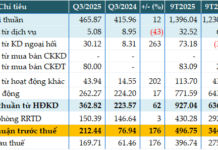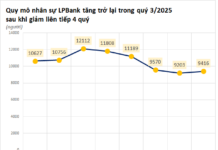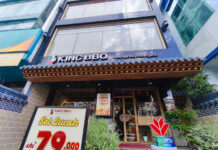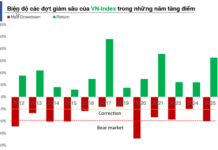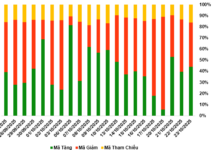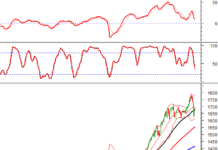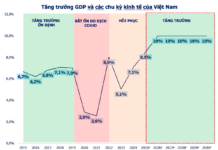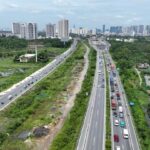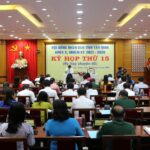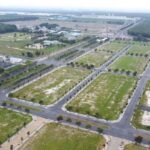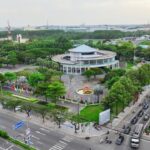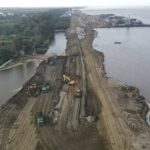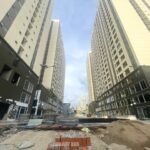Deputy Prime Minister requested the Ministry of Transport to absorb and propagate the directions of the Central Committee and the Politburo, as well as the dedicated suggestions contributed by ministries, sectors, experts, and people. The Ministry should continue to update and perfect the pre-feasibility report to be submitted to the National Assembly, focusing on issues with scientific and practical foundations. Specifically, in addition to the investment scope from the starting point of the project in Hanoi to the endpoint in Ho Chi Minh City, it is also necessary to consider and research the option of extending the high-speed railway line from the northernmost point of Mong Cai to the southernmost point of Ca Mau.
Moreover, the pre-feasibility report should reflect the viewpoint of constructing a high-speed railway with a design speed of 350 km/h that is “as straight as possible,” navigating through mountains and rivers with tunnels and bridges.
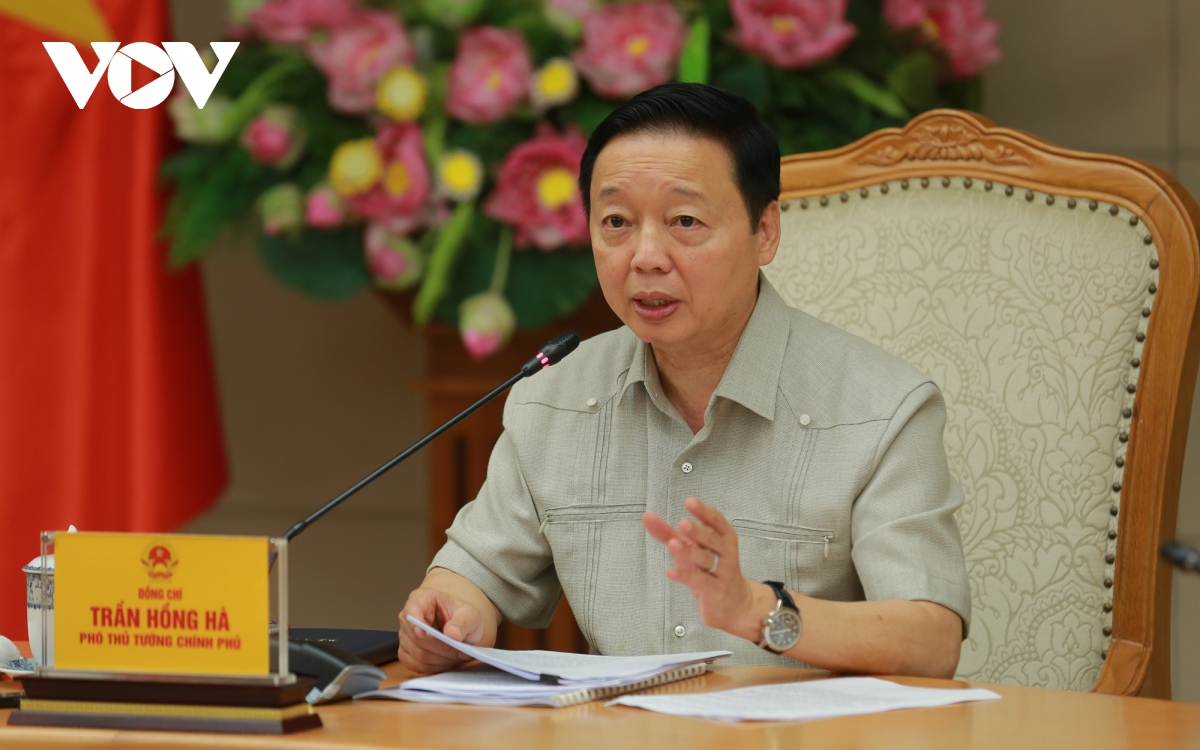
Deputy Prime Minister Tran Hong Ha chaired the meeting on the deployment of the high-speed railway project on the North-South axis
Regarding the investment implementation form, the Deputy Prime Minister requested the Ministry of Transport to clearly point out the advantages and disadvantages of considering the entire line as a single project or having multiple component projects. He also asked for proposals on specific mechanisms and policies regarding investment phasing, allocation of central and local capital in one go or in five-year phases, and the utilization of bonds, ODA, and other legal sources, taking advantage of the remaining public debt ceiling.
Additionally, the Ministry of Transport needs to propose solutions to enhance decentralization and delegation of authority, assigning responsibilities to localities for site clearance and the construction of technical infrastructure and stations, while the central government uniformly manages standards and specifications, ranging from design, infrastructure, vehicles, and information systems to operations. At the same time, “task allocation” should be carried out for private enterprises to mobilize external resources, including land funds on both sides of the railway line, to reduce state costs and resources.
The Deputy Prime Minister also assigned the Ministry of Industry and Trade to take the lead, in coordination with the Ministry of Transport, the Vietnam Railway Authority, and the Vietnam Railway Corporation, along with several large enterprises, to construct and implement a roadmap for receiving, transferring, and mastering railway technology, as well as developing the railway industry, encompassing the production of equipment, operation, and management, ensuring synchronization and uniformity in terms of technology, standards, and specifications.
The Ministry of Education and Training was tasked with taking the lead, in coordination with the Ministry of Transport, to build and proactively implement human resource training in advance, ensuring readiness in receiving, mastering, and autonomously handling technology, technical design, equipment manufacturing, operation, and management in the railway sector.
“Developing high-speed railways, urban railways, and the Vietnamese railway sector in general should create a driving force for the mechanical, manufacturing, and automation industries, as well as other industries, to serve the national economy and people’s livelihoods,” emphasized the Deputy Prime Minister.
Currently, the Ministry of Transport and related units are urgently constructing a pre-feasibility study report for the investment project of the high-speed railway on the North-South axis, preparing procedures to submit to the National Assembly for consideration and feedback during the October 2024 session.
According to the report by Nguyen Danh Huy, Deputy Minister of Transport, the investment project aims to build a high-speed railway to meet transport needs, contribute to the optimal and sustainable restructuring of the transport market share on the North-South corridor, create a premise and driving force for socio-economic development, and ensure national defense and security.
The specific objectives are to strive for approval of the investment policy before 2025, complete site clearance and commence construction before 2030, and complete the entire line before 2045.
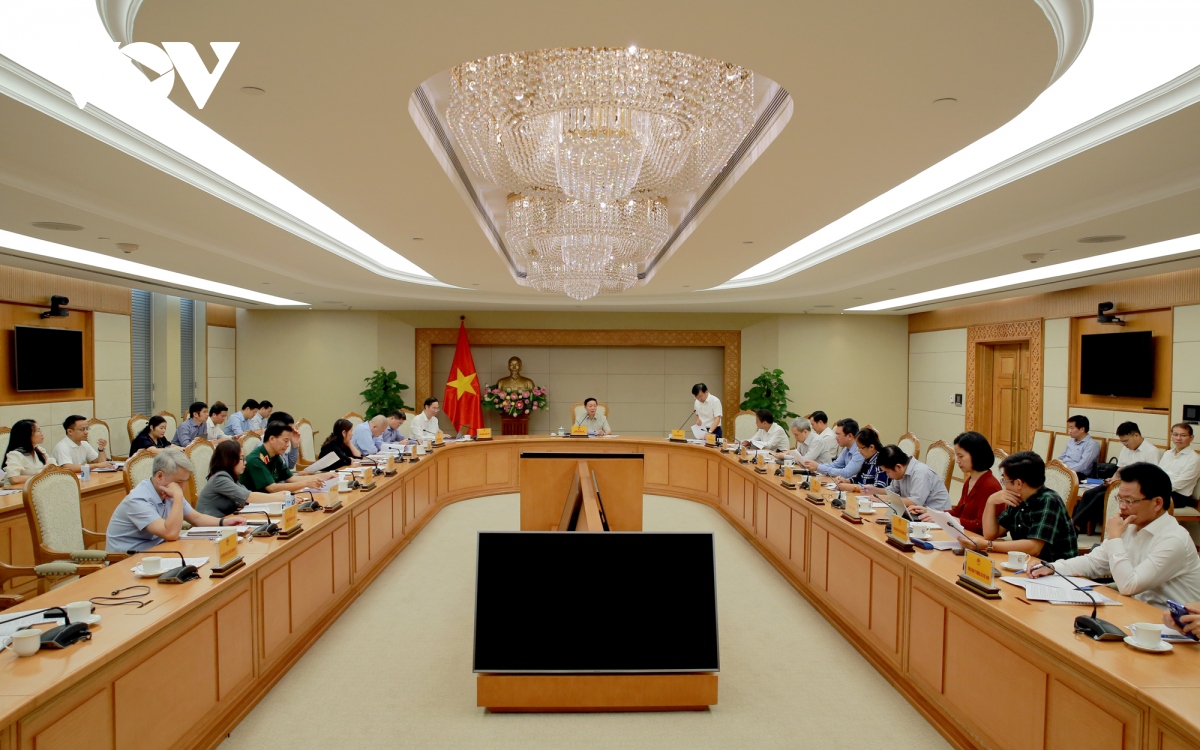
The investment scope of the project has its starting point in Hanoi: The Ngoc Hoi Station Complex (the southern transport hub for passengers and cargo of the Hanoi railway hub). The endpoint is in Ho Chi Minh City: Thu Thiem Station (the eastern transport hub for passengers of the Ho Chi Minh City railway hub).
The project passes through 20 provinces and cities, including Hanoi, Ha Nam, Nam Dinh, Ninh Binh, Thanh Hoa, Nghe An, Ha Tinh, Quang Binh, Quang Tri, Thua Thien-Hue, Da Nang, Quang Nam, Quang Ngai, Binh Dinh, Phu Yen, Khanh Hoa, Ninh Thuan, Binh Thuan, Dong Nai, and Ho Chi Minh City.
At the meeting, leaders of the Ministry of Planning and Investment, Ministry of Finance, Ministry of Science and Technology, and the Ministry of Information and Communications discussed and clarified several groups of specific mechanisms and policies in the pre-feasibility report to be submitted to the National Assembly in the upcoming session. These included the investment scope of the project, investment efficiency for the railway sector and the economy, investment forms and capital mobilization solutions, implementation plans for connectivity with other transport modes, orientations for developing railway services and industry, effective exploitation of land funds along the route, and decentralization and delegation of authority to ministries, sectors, and localities.
The Ultimate Road Expansion: Unveiling the $1,000 Billion Vision for a High-Speed Connection
The 3km-long highway stretch from An Phu Intersection to Ring Road 2 in Thu Duc City will be expanded to double its capacity, resulting in a complete eight-lane roadway.
The Cost of High-Speed Rail in Vietnam: $43.69 Million for 1 km of Track, with 60% on Viaducts to Ensure a Straight Route
The pre-feasibility report for the high-speed North-South railway project by the Ministry of Transport estimates the project’s investment rate at $43.69 million per kilometer. This ambitious venture promises to revolutionize transportation in the region, offering unprecedented speed and efficiency. With a projected investment of $43.69 million per kilometer, this project is poised to become a landmark infrastructure development, shaping the future of travel and connectivity in the area.
The Ultimate Investment: Tay Ninh’s Multi-Billion Dong Project
The Tay Ninh Provincial People’s Committee has just approved a resolution on investment policies for key projects in the region, with a substantial budget of hundreds of billions of dongs. This decisive move underscores the province’s commitment to fostering economic growth and developing key infrastructure projects.
“Prior to 2022, businesses paid approximately VND 100 billion in land use fees for a 10-hectare project, but this has now surged to VND 350 billion, and even up to VND 500 billion.”
Mr. Pham Duc Toan, CEO of EZ Property – a prominent real estate investment and development company, expresses his concern about certain localities’ land valuation methods. He believes that some areas base their land prices on data from real estate transactions that occurred during a heated market, resulting in significantly higher taxes for businesses.
The New Land Price List of Ba Ria-Vung Tau: A 20-30% Surge
The province of Ba Ria-Vung Tau has unveiled a new land price list, with a significant increase of 20-30% compared to previous decisions. The urban land in the central routes of Vung Tau now boasts a premium price tag of up to 78 million VND per square meter, reflecting the region’s growing value and potential.







